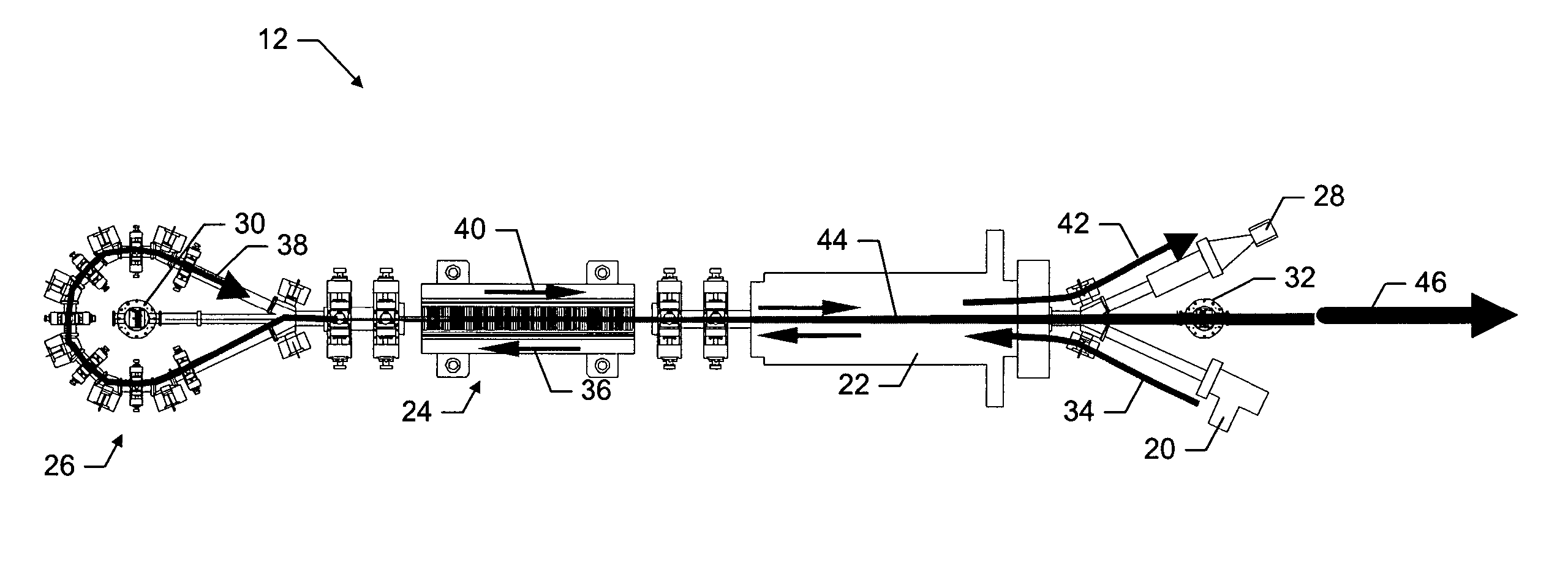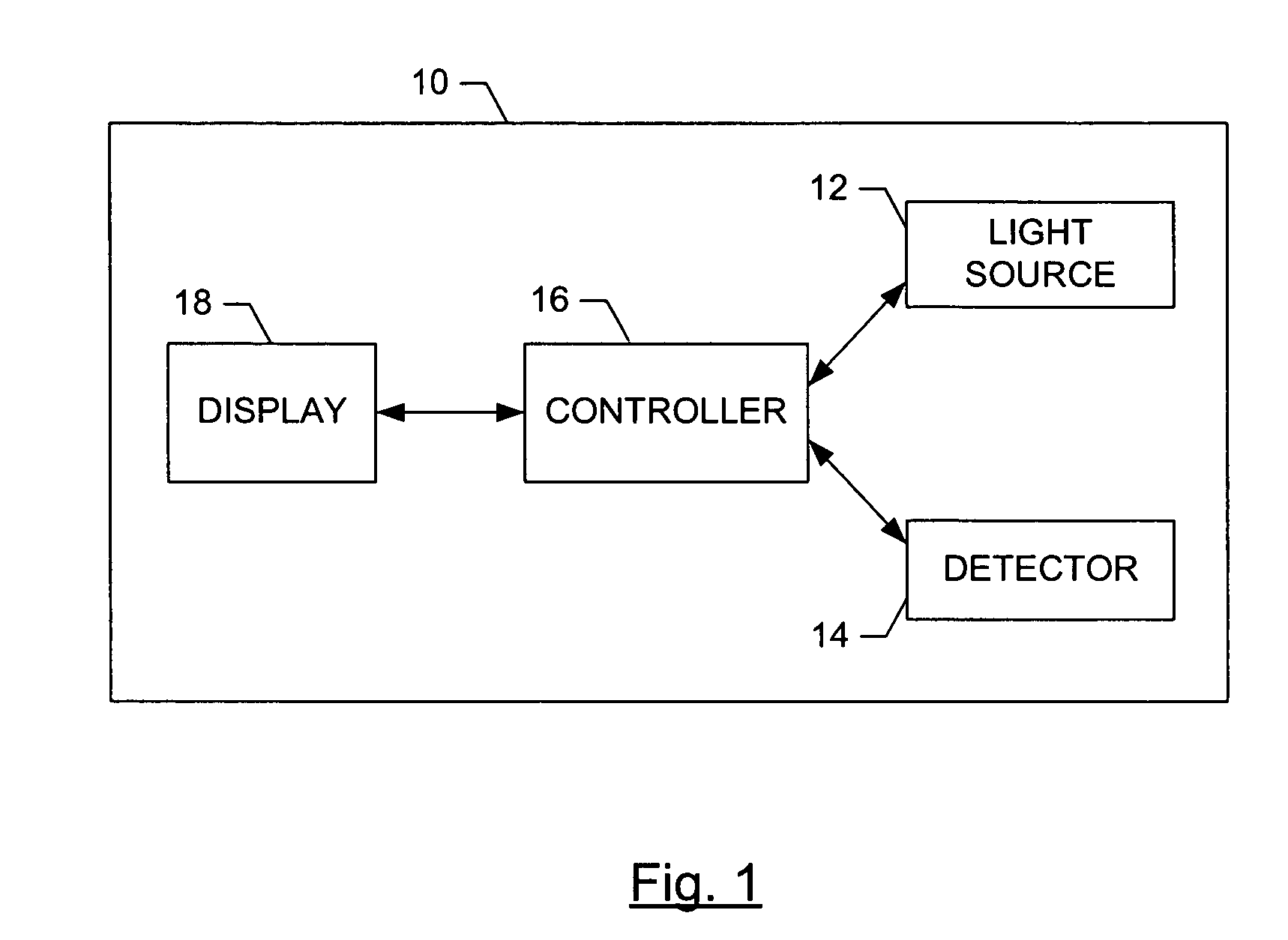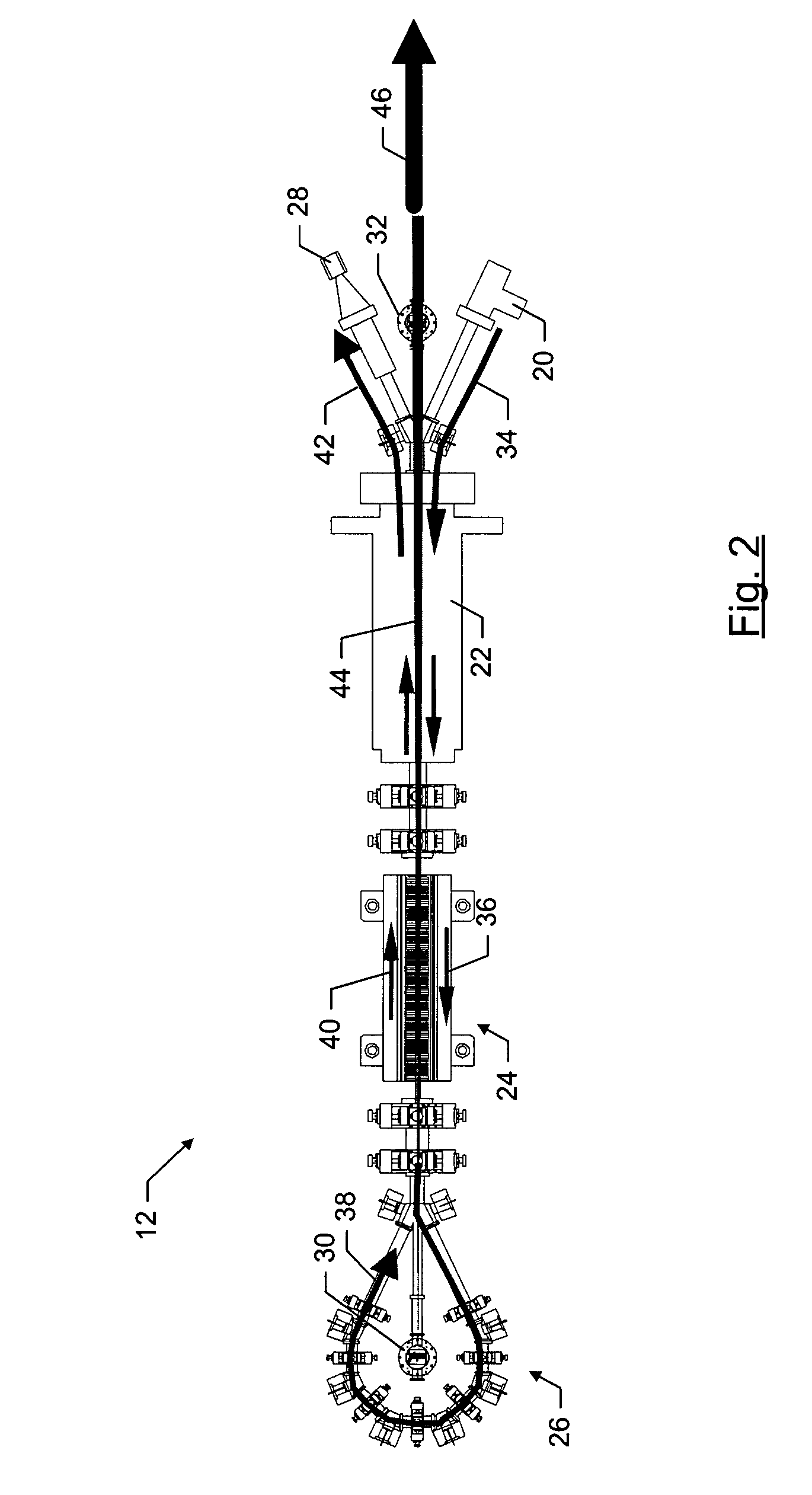Terahertz imaging system and associated method
a technology of terahertz imaging and associated methods, applied in the field of imaging systems, can solve the problems of presenting a threat to citizens, structures, and public transportation, and the ineffectiveness of magnetometers in detecting explosive devices, and achieves the effect of avoiding injury to the person, high peak output power, and low average output power
- Summary
- Abstract
- Description
- Claims
- Application Information
AI Technical Summary
Benefits of technology
Problems solved by technology
Method used
Image
Examples
Embodiment Construction
[0019] Embodiments of the invention now will be described more fully hereinafter with reference to the accompanying drawings, in which some, but not all embodiments of the inventions are shown. Indeed, these inventions may be embodied in many different forms and should not be construed as limited to the embodiments set forth herein; rather, these embodiments are provided so that this disclosure will satisfy applicable legal requirements. Like numbers refer to like elements throughout.
[0020] Referring to FIG. 1, a functional block diagram of a terahertz imaging system is illustrated, according to one embodiment of the invention. The terahertz imaging system 10 comprises a terahertz light source 12, a detector 14, and a display 18. The light source and the detector may be controlled by a controller 16, which may be a computer or other microprocessor-based device. The terahertz light source 12 typically illuminates a target object with a series of short pulses of terahertz light, each...
PUM
 Login to View More
Login to View More Abstract
Description
Claims
Application Information
 Login to View More
Login to View More - R&D
- Intellectual Property
- Life Sciences
- Materials
- Tech Scout
- Unparalleled Data Quality
- Higher Quality Content
- 60% Fewer Hallucinations
Browse by: Latest US Patents, China's latest patents, Technical Efficacy Thesaurus, Application Domain, Technology Topic, Popular Technical Reports.
© 2025 PatSnap. All rights reserved.Legal|Privacy policy|Modern Slavery Act Transparency Statement|Sitemap|About US| Contact US: help@patsnap.com



